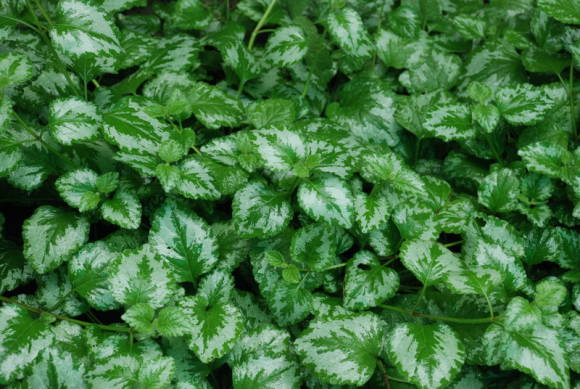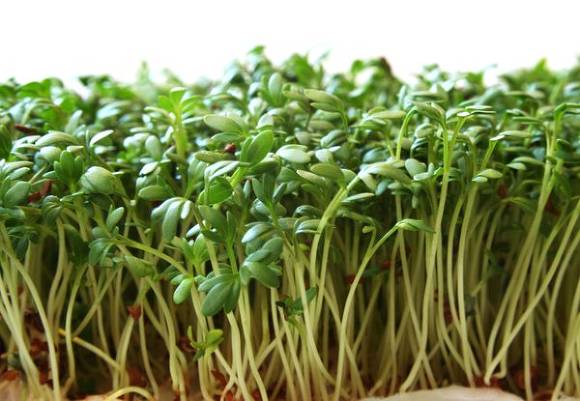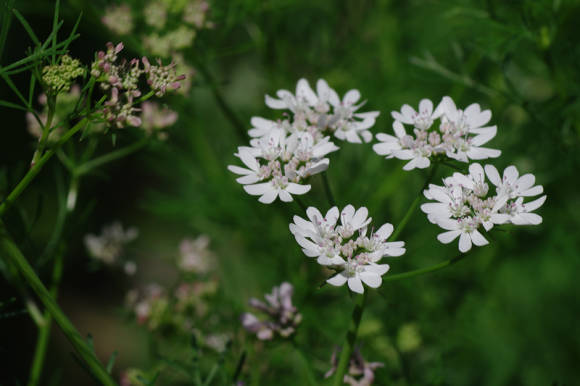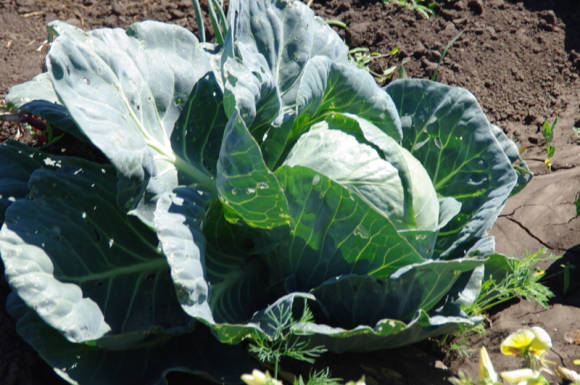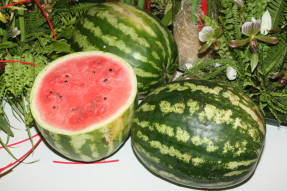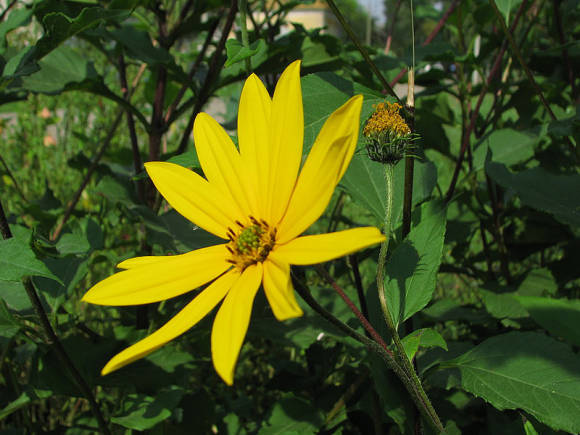
The well-known and widespread "chokeberry" is mistakenly referred to as chokeberry (Aronia melanocarpa (Michx.) Elliott), its correct name is aronia Michurina (Aronia mitschurinii Skvortsov & Maitulina). This fact has been convincingly proven by Russian scientists and recognized by leading experts in the field of botany.
To understand this, first of all, you should know that real black chokeberry (A. melanocarpa) is a wild natural species that grows in eastern North America, mainly in swamps, along the banks of streams and lakes, on damp sandy plains, dunes, steep cliffs and rocks. Black chokeberry is a strongly branching shrub (0.5-1 m high) with simple whole leaves, the size and shape of which varies from small and rounded to larger ones, with a pointed end. It blooms with white or slightly pinkish flowers, in the inflorescence of 4-6 small flowers. She has small (weighing 0.3-0.8 g), shiny, black, oval or slightly pear-shaped, not juicy and slightly edible fruits. In addition, this species has a diploid set of chromosomes (2n = 34). Chokeberry is rarely found in the culture, it is not very decorative; it appeared in Europe at the beginning of the 19th century. In North America, it is destroyed as a hard-to-eradicate weed.
Probably, not everyone knows that our "blackberry" is a species artificially created by I.V. Michurin, and named by botanists in honor of its creator Aronia Michurin. At the end of the 19th century, I.V. Michurin received the seeds of chokeberry (A. melanocarpa) from Germany, raised seedlings and began to cross them with distantly related plants (possibly mountain ash). So, in the nursery of Kozlov (now Michurinsk), as a result of numerous experiments, the famous Russian breeder obtained a new plant (A. mitschurinii) with larger edible fruits and a different set of chromosomes, which was no longer chokeberry.
I.V. Michurin, famous for many new varieties, wrote: “I have introduced several improved species of fruit plants, including ... Chokeberry "... He recommended introducing a new breed into the culture for planting in forest belts, and using the fruits for various technical processing, “for dessert in those harsh climatic areas where there is a lack of other fruits».

Aronia Michurina, orChokeberry - shrub more than 3 m high with a dense oval crown. She has obovate leaves with an oval top, this shape is slightly variable. The inflorescence contains 12-35 larger white flowers. The fruits are also larger (weighing up to 1.25-1.5 g), spherical, slightly flattened, black with a bluish matte bloom. They are juicy, edible, sour-sweet taste with astringency. Chokeberry Michurin has a tetraploid set of chromosomes (2n = 68). In addition, the cultivated chokeberry Michurin withstands winter temperature drops down to -35-40 ° C, and the externally different American chokeberry is a moderately cold-resistant plant.
The documented history of the spread of large-fruited edible chokeberry (A. mitschurinii) begins in 1935, when M.A. Lisavenko brought cuttings of this species from Michurinsk to the experimental station in Gorno-Altaysk. They safely endured the winter under a snow shelter and laid the foundation for large plantings of a new berry crop in Siberia. In the 1940-1950s, the Altai Experimental Station began to send seeds and seedlings of this shrub to different regions of Russia. By 1960-1970, Michurin's chokeberry was spread to the Baltic States, Belarus, Ukraine, Moldova and the Caucasus. Over the years, the planting area of this culture has increased, especially in the territory of the former USSR. The modern cultural area of chokeberry Michurin also covers Finland, Sweden, Poland, Germany, Romania, Hungary, Czech Republic, Slovakia and even the homeland of her ancestors - the USA and Canada.
Planting for cultivation
Aronia Michurina is demanding on the illumination of the site.When planted in a shady place, it blooms and bears much less fruit. In this regard, an illuminated area is chosen for her, placing the bushes at a distance of 2 m so that they do not shade each other. Another significant factor when choosing a site for this shrub is soil moisture. It grows well on rich sandy loam and light loam. Heavy loams and very fertile soils contribute to the intensive growth of shoots to the detriment of the setting of flower buds, and hence the yield. Plants are especially sensitive to a lack of moisture during the period of fruit ripening. On dry soils and elevated areas, small and low-yield fruits ripen on the bushes. The best time to plant Michurin's chokeberry is autumn. Planting pits measuring 60x60x40 cm are filled with a good nutritious mixture of organic and mineral fertilizers.
Breeding features
In amateur gardening, Michurin's chokeberry is most often propagated by root suckers. By autumn, the offspring grow to a height of 30-40 cm and have a sufficiently developed root system. It is also propagated by cuttings, horizontal and vertical layering, dividing the bush, and in various ways of grafting on mountain ash, hawthorn and pear.
In the chokeberry Michurin, in the process of seed reproduction, the genetic characteristics of the offspring are preserved, as in cuttings, the reason for this is apomixis (development of the embryo without pollination). It is better to sow freshly harvested seeds in the fall so that they can undergo natural stratification in natural conditions. The seeds are sown into the ground to a depth of 1.5 cm. The seedlings bear fruit in the third or fourth year.
Decorative properties

Aronia Michurina blooms in May-June for 12-14 days, 2 weeks after the leaves bloom. It is valued not only as a fruit crop that is not damaged by spring frosts and bears fruit abundantly every year, but also for its decorative qualities.
A. mitschurinii is a gas-resistant shrub, therefore it is planted for landscaping streets and parks. Michurin's chokeberry is especially elegant in autumn, when the whole bush turns bright scarlet. Tall bushes of Michurin's chokeberry are used for single and group plantings, but more often for creating a hedge. If the plants are planted along the border of the site at a distance of 1 m from each other, then over time a dense fence will form. Pest insects do not spoil its appearance. Aronia Michurina is also used as an edge crop in the field protection zone.
Potential threat to natural biodiversity
In nature, Aronia Michurin (A. mitschurinii) does not occur, with the exception of specimens that have been wild in the last decade. In some areas of Central Russia, Michurin's chokeberry has adapted so well that it spreads into forests with the participation of birds. In the 2000s, the phenomenon of naturalization was noted by A. Kuklina in the pine forests of the Ramensky and Orekhovo-Zuevsky districts of the Moscow region. In 2002, run wild A. mitschurinii first found by A.P. Seregin in the Meschera National Park, Gus-Khrustalny District, Vladimir Region, and later found in the undergrowth of pine forests throughout the region, especially in the eastern and southeastern regions.
In connection with these facts, single plants of Michurin's chokeberry, planted outside the garden plots, and wild thickets pose a potential threat to natural vegetation. Uncontrolled colonization of plant communities by invasive species should not be allowed. It is necessary to protect natural biodiversity, mechanically or chemically remove representatives of foreign flora.

